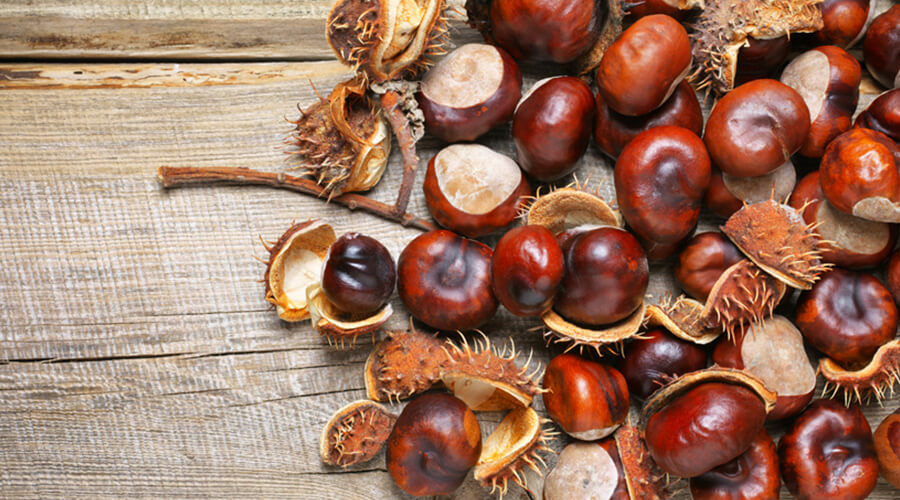
The Latin name for horse chestnut is Aesculus hippocastanum.
Before you read about chestnuts wonderful physiological effects, let’s first have a look at some botany.
The chestnut is a 16-20 m tree. Its crown is narrow and arched. The branches are arching and usually open in May and have conical white flowers. It is a very beautiful tree and is often found in parks. Its winter buds are usually brown and glabrous. The leaves are 10-25 cm long, with long, elongated margins, blunt and double-edged. The flowers are about 2 cm wide and the petals are wavy.
The centre has a yellow spot at first, later turning red. In May, the spiny spikelets, 4-6 cm in diameter, open and contain a brown seed. In autumn it is usually a very pretty brown or yellow. The chestnut is a very popular ornamental tree in our country. Interestingly, there are at least 15 species of this plant, which originated in the Balkan Peninsula. It is still planted in parks and along roadsides because it requires very little care and grows very quickly. It should not be planted alongside roads as it is quickly destroyed by exhaust fumes.
Almost every part of the horse chestnut tree is full of wonderful active ingredients.
There are so many ingredients, but the most important one to highlight is saponin. Saponins are soap substances. When mixed with water, these substances foam quite vigorously. It also contains tannins, but also escin and esculetin. The most important active ingredients are the esculinic saponins.
It is worth noting that chestnuts used to be harvested mainly for fodder. In the old days, women used it for washing because of its soapy properties, as mentioned above. According to a popular belief, anyone who carried more than three chestnuts was protected against various diseases, but its true medicinal properties have only been known since the end of the 19th century. It was observed that animals fed chestnuts recovered much faster from respiratory infections. After that, of course, horse chestnut was deliberately given to animals suffering from respiratory diseases, especially horses. That is why it is often called horse chestnut. It is not recommended for humans to make horse chestnut tea as it is poisonous. However, in the past, its leaves were used to make tea. However, such use is no longer recommended.
Horse chestnut seeds contain escin which promotes venous return and can prevent blood clots, strengthen blood vessel walls and have anti-inflammatory properties.
It helps to reduce swelling and is also effective against water retention. Preparations made from its seeds are therefore recommended for the treatment of vasodilatation, thrombosis and oedema. Horse chestnut can also promote the metabolism of the synovial membrane. It can therefore be used in cases of gout, bone pain and pain in the spinal column.
Chestnut bark contains a certain esculin that reduces the permeability of capillaries and increases their resistance. Chestnut is also the raw material for many sunscreens. The active ingredient in the bark is used in folk medicine to treat boils and skin problems. Its leaves can be used to make a sitz bath, which can be very good for hemorrhoids. It can also be used to make a foot bath, as it is good for varicose veins, and is also very good for varicose veins and rashes. A bath with horse chestnut will also make the skin supple, soft and silky. Several beauticians use horse chestnut for skin with rosacea and redness.
By the way, horse chestnut is also found in our HillVital Varicoflex Balm which is specifically recommended for varicose veins. This proves that herbs have not become obsolete even today.


